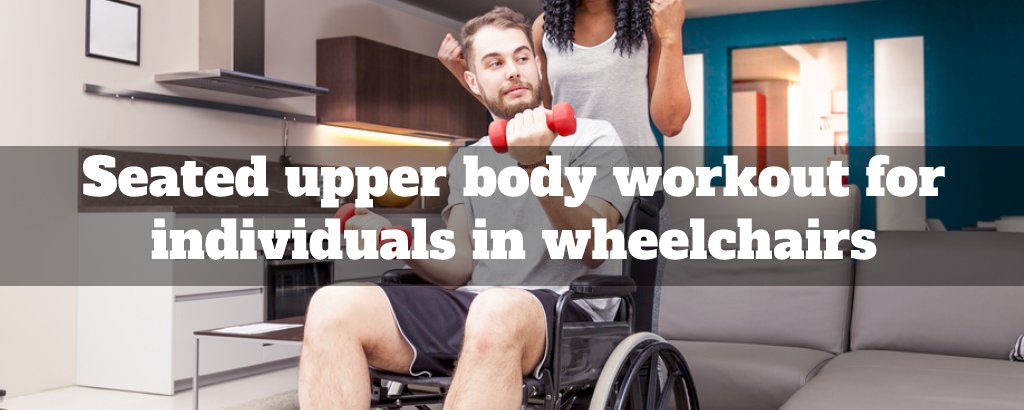Regular exercise has positive effects on both physical and mental health. In this article, we’ll educate you on how to work out your entire upper body while seated and explain why wheelchair users must exercise.
Upper body workouts can reduce discomfort and enhance the quality of life for wheelchair users when combined with other treatments.
Why is working out more difficult for people in wheelchairs
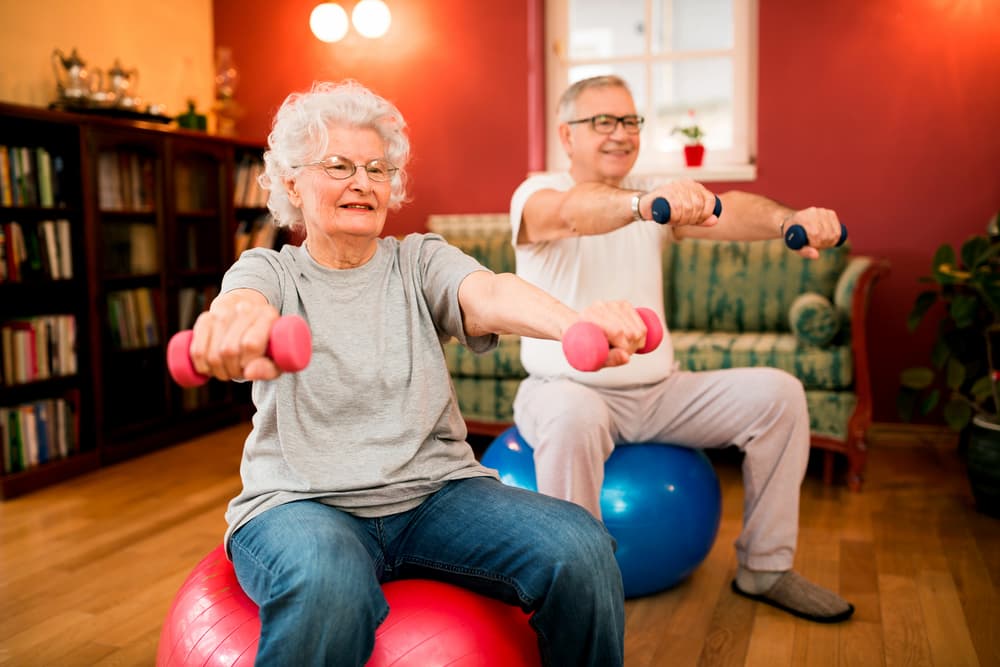
The biggest issue for those in wheelchairs is limited mobility, making working out difficult.
People with disabilities may be at a higher risk for obesity than the general population because they are less likely to engage in physical activity. Low motor abilities lead to poor task performance, which increases weight and makes working out on a chair with a fat body increasingly harder.
Why should they exercise even though it’s harder?
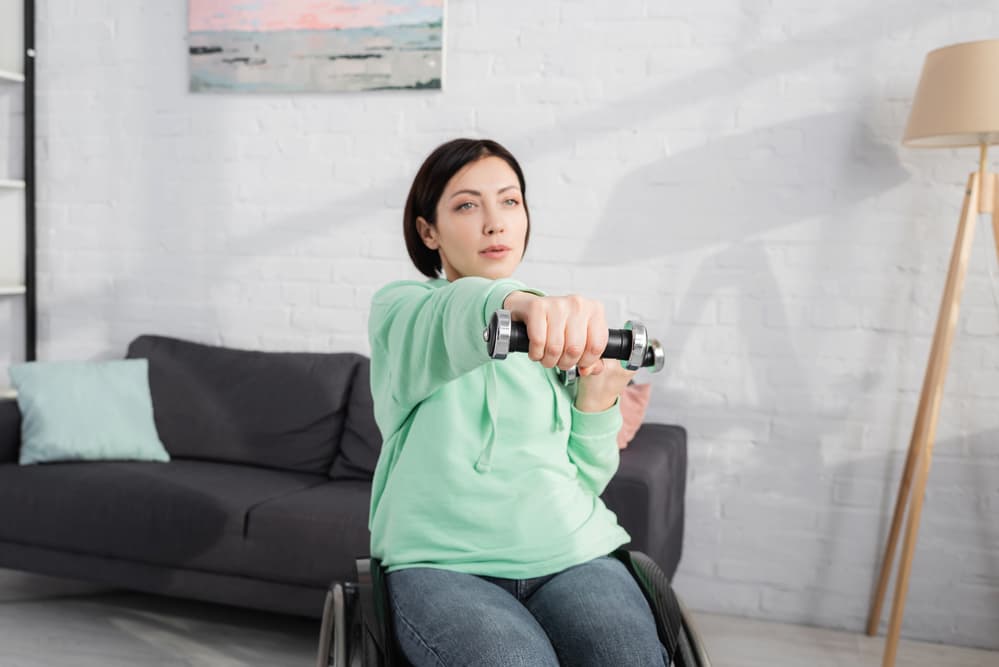
Exercise can be challenging for those in wheelchairs, but they should still do it because:
- It aids in avoiding unhealthy weight gain.
- Daily workout lowers the risk of numerous chronic illnesses, including type 2 diabetes, heart disease, and cancer.
- Even if you have to do exercise while sitting, it can help improve your posture and prevent back pain.
- Muscle-building exercises can reduce the danger of injuries and a great deal of pressure on specific upper body muscles caused by wheelchair pushing.
- It encourages neurogenesis and guards against damage and neurodegenerative disorders of the nervous system.
- Muscle-strengthening workouts will assist you in managing your wheelchair in everyday life.
- It enhances sleep quality and aids in anxiety reduction.
- It decreases the incidence of dementia and enhances cognitive function.
- Exercise increases muscles’ and bones’ health.
- Your body produces endorphins, which uplift your mood, reduce stress, increase self-esteem, and promote well-being.
What happens if you don’t exercise
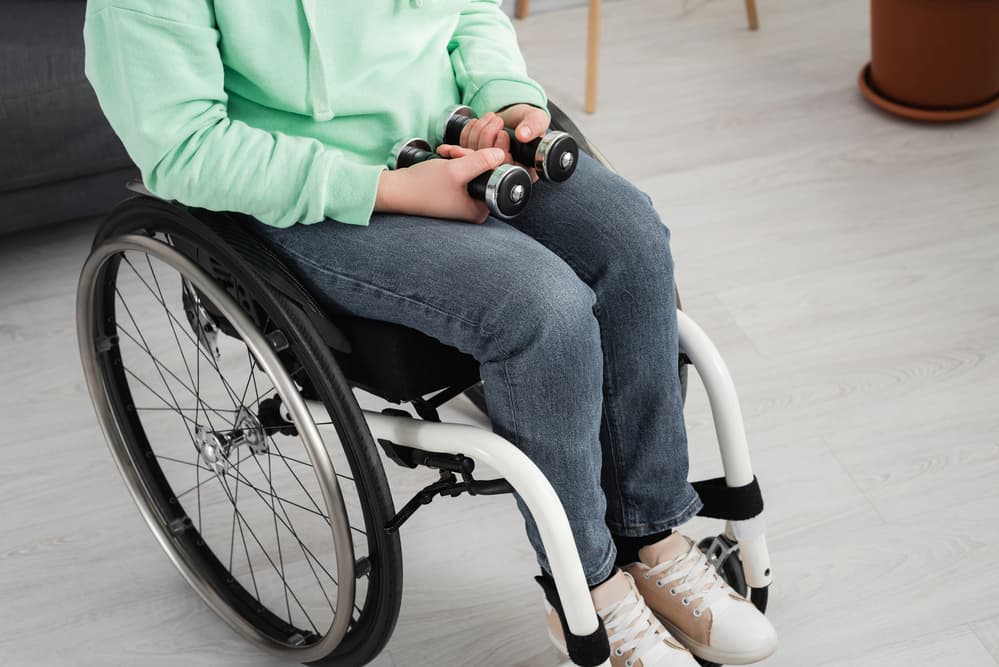
The Negative Effects of Insufficient Physical Activity
Heart Disease.
Even in the absence of other risk factors, heart disease can develop as a result of insufficient physical exercise.
It can also make other risk factors for heart disease more likely to manifest, such as type 2 diabetes, high blood cholesterol, high blood pressure, and obesity.
Diabetes Mellitus, Type 2
Insufficient exercise is associated with an increased risk of developing type 2 diabetes. Maintaining a healthy weight, blood pressure, and glucose level, as well as increasing “good” cholesterol and decreasing “bad” cholesterol, are all aided by regular exercise.
Heart disease and nerve damage are common complications of diabetes, but doing enough exercise (at least 150 minutes a week of moderate activity) can help mitigate these risks.
Cancer.
By staying active, you can avoid getting breast, colon, and uterine cancers, among others. One of the best ways to take care of one’s health is to engage in regular physical activity.
Poor memory
Exercise helps neuroplasticity, which is the brain’s ability to make new neural connections and change over time. Limited physical activity can affect your memory.
According to a study published in the journal Neurology, those who were fit and healthy as young adults had superior memories, motor abilities, and an improved capacity for focus and mood regulation 25 years later, when they were middle-aged.
Weaker muscles
Without regular exercise, muscle tissue degenerates and disappears. In other words, if you don’t use it, you’ll lose it.
Research published in 2012 in the European Journal of Applied Physiology found that muscle loss occurs in athletes and non-athletes after only three weeks of inactivity. However, a study published in 2015 in the Journal of Rehabilitation Medicine reports that young men lose an average of 17 ounces of muscle mass after just two weeks of complete inactivity.
Seated upper body exercises for wheelchair users.
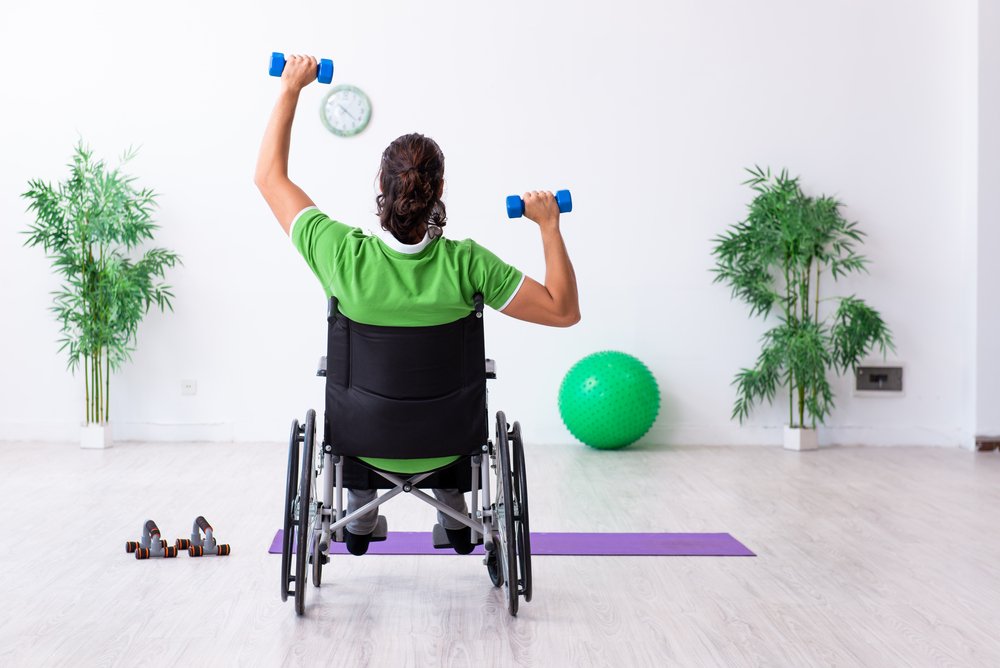
Punches while seated.
Seated punches can develop your core and build your ab muscles without equipment.
Target muscles: obliques and abs as well as shoulders.
Alternate between the right and left arms while jabbing forward.
- Snap the arm as quickly as possible when jabbing without locking the elbow or fully stretching the joint.
- Pull the right arm in as rapidly as possible while keeping the other arm raised and protecting the face. Then, strike with the opposite arm.
- Front and high jabs: Alternate right and left punches forward, then right and left punches high.
- Twenty repetitions should be performed by moving forward and then up.
Shoulder Openers
The shoulder and chest muscles get a nice stretch from this practice. It contributes to keeping the shoulders and upper extremities mobile, reducing pain and injury.
Equipment required: a dowel or broomstick.
Target muscles: pectoralis major, Rotator cuff muscles, pectoralis minor, and deltoids
- If at all possible, take the wheelchair’s armrests off.
- Take a good seat and hold a broomstick with a grip that is about 6 inches wider than your shoulders.
- Maintaining a straight back, lift the dowel over your head.
- Shift your grasp if you need to, and keep pulling behind your head until you feel a stretch.
- Hold the position for 5 seconds and then move back to the starting position ten times.
- Repeat each day once.
Triceps Extension
The triceps extension is an isolation exercise that works the muscle on the back of the upper arm.
Primary target: Triceps, shoulders, and core are the main focus areas.
required equipment: Dumbbell
level: Moderate
Maintain an upright posture while holding the weights at your sides, palms facing in. Raise your arms to your shoulders and hold for a second. Now, continue raising the weights upward until your arms parallel your ears.
The ideal starting position is with the arms bent to 90 degrees behind the head.
Repeat this action (arms straight, then sweeping down) 16 times.
Lat Pull Downs
This move is excellent for building strength in all the major muscles of the mid-back, upper arms, and abdominals.
Everyday actions like tugging and pushing are powered by the latissimus dorsi, a group of big muscles that run along the back’s sides.
Equipment required: anchor point, grips for the resistance band (bar or hook 3 to 4 feet above head)
Target muscles: Latissimus dorsi, trapezius, and rhomboids
- Armrests should be taken from the wheelchair if at all possible.
- You should suspend the resistance band from the bar and sit directly under it, slightly in front of it.
- Push your belly button toward your spine and sit up straight to activate your core muscles.
- Pull yourself up with your hands on the grips while keeping your elbows open.
- The final part of the motion should involve bringing the elbows in toward the body as if trying to tuck them into the back pockets. Contract your abs and upper back briefly, then release and resume your original position.
- Do 15 repetitions.
- Relax for a full minute.
- Perform three sets.
- Repeat daily.
Reverse Fly
The reverse fly is a resistance exercise that targets the upper back’s main muscles and the rear shoulders.
Equipment required: the resistance band.
Target muscles: muscles in the back: the posterior deltoids, rhomboids, and trapezius.
- Set up a resistance band by looping it around a pole or other stable item in front of you at shoulder height.
- Lift your arms ahead of your body until they are at shoulder height, holding the band firmly in both hands.
- Make sure your shoulders are down and back, and your arms are at your sides. Tighten the space between your shoulder blades on the final part of the motion.
- Adjusting the band’s length to achieve the desired tension may be essential.
- Make sure to finish your 15 reps.
- Relax for a full minute, and repeat three times.
- Do it daily and keep doing it.
Seated upper body workout Videos
If you use a wheelchair, these upper body workout videos will undoubtedly assist you in getting adequate upper body exercise to include in your daily routine. You can consult with your healthcare provider for pain or discomfort while doing a seated workout.
Before you go
Many wheelchair users are also concerned about their belly fat and maintaining a good exercise regimen. Check out our article to learn how to lose tummy fat in a wheelchair.
